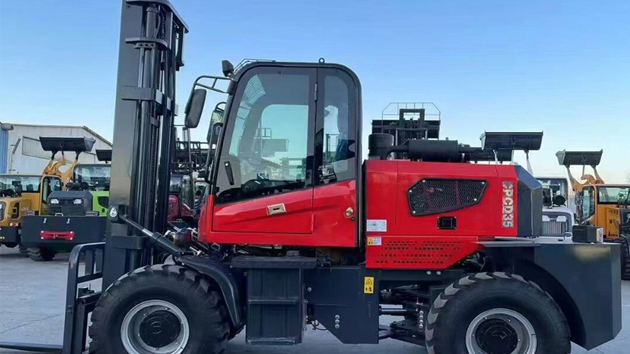Steel Beasts: The Rise of Heavy-Duty Rough Terrain Forklifts in Timber Logistics
2025-07-04 03:30:27
The lumber and timber industry operates in some of the most demanding work environments, where uneven ground, muddy conditions, and heavy loads are the norm. Traditional warehouse forklifts often fail to meet these challenges, leading to inefficiencies and safety risks. This is where Rough Terrain Forklifts come into play, offering superior stability, power, and adaptability for lumber stacking operations.
Rough terrain forklifts are engineered with reinforced chassis, large pneumatic tires, and high-torque engines to traverse unstable surfaces. Unlike standard forklifts, these machines feature enhanced suspension systems and all-wheel drive capabilities, ensuring optimal traction on soft soil, gravel, or inclined surfaces common in lumber yards. Their lifting capacities, often exceeding 10,000 lbs, make them ideal for handling bulky timber stacks without compromising maneuverability.
One of the critical advantages of rough terrain forklifts in lumber stacking is their ability to operate in variable weather conditions. Rain, snow, or loose terrain can disrupt conventional forklift operations, but rough terrain models maintain performance consistency. Advanced hydraulic systems allow precise load placement, reducing the risk of dropped or misaligned timber stacks—a crucial factor in maintaining workplace safety and operational efficiency.
Industry data highlights a growing adoption of rough terrain forklifts in forestry and lumber processing. According to a 2023 market report, the global rough terrain forklift segment is projected to grow at a CAGR of 5.8%, driven by demand from timber and construction sectors. Manufacturers are now integrating telematics and automated load sensors to further optimize lumber stacking workflows, reducing fuel consumption and operator fatigue.
Safety remains a top priority when deploying rough terrain forklifts for lumber stacking. Operators must undergo specialized training to handle uneven surfaces and heavy loads safely. Features such as load moment indicators (LMIs) and stability control systems are becoming standard, minimizing rollover risks. Additionally, reinforced overhead guards protect operators from falling debris—a common hazard in timber yards.
The future of rough terrain forklifts in lumber logistics looks promising, with innovations like hybrid powertrains and autonomous navigation on the horizon. These advancements will further enhance productivity while reducing environmental impact. For now, rough terrain forklifts remain the backbone of timber handling, proving their worth as indispensable tools in one of the world’s most rugged industries.












